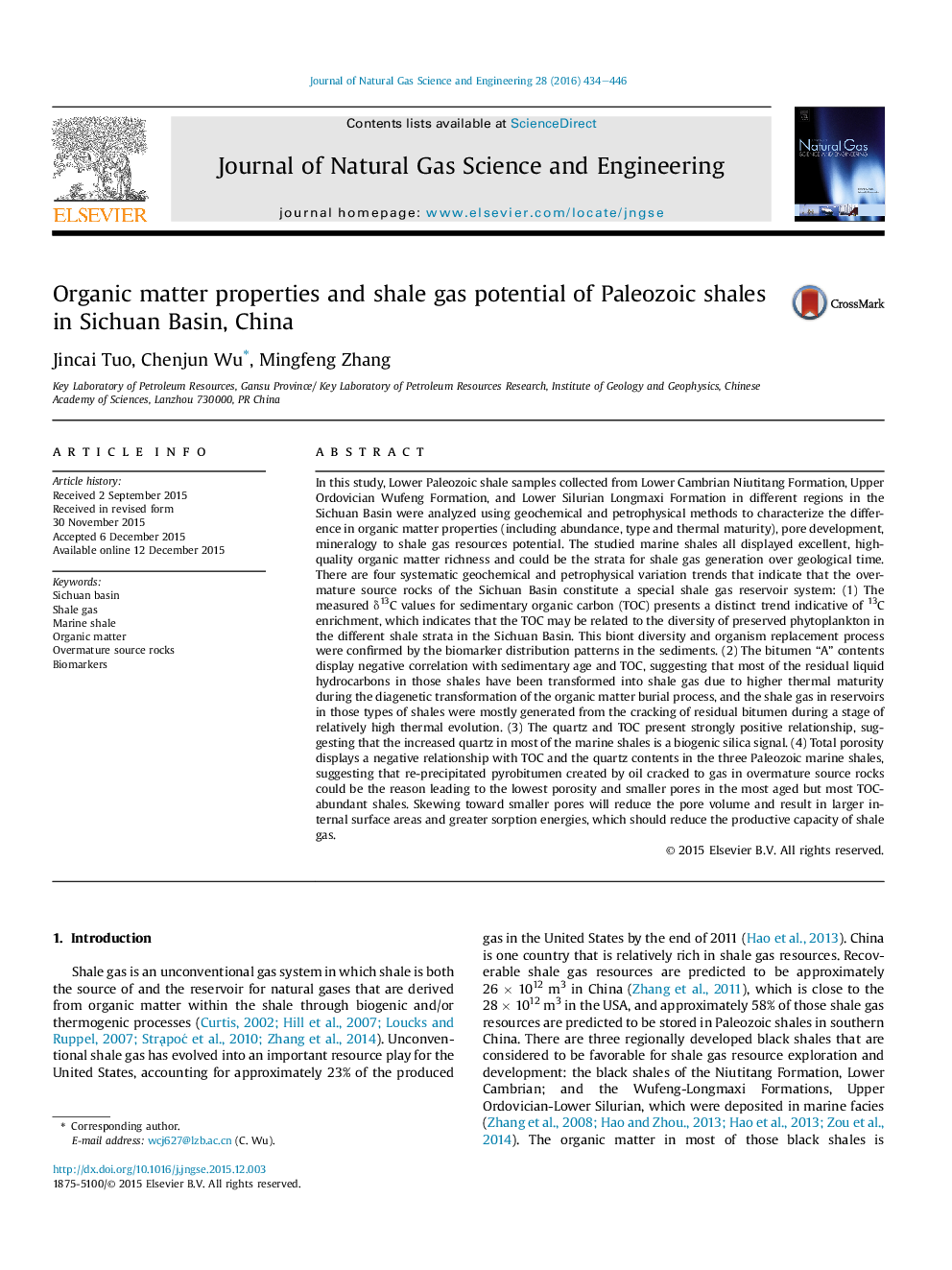| کد مقاله | کد نشریه | سال انتشار | مقاله انگلیسی | نسخه تمام متن |
|---|---|---|---|---|
| 1757303 | 1523013 | 2016 | 13 صفحه PDF | دانلود رایگان |
• Paleozoic shales in Sichuan Basin display a special reservoir characterization.
• The δ13C for TOC present enrichment with decreasing age.
• High level of brittle mineralogical constituents and brittleness index favorable for fracturing production for shale gas.
• Oil cracked to gas leading to the lowest porosity in the most TOC-abundant shales.
In this study, Lower Paleozoic shale samples collected from Lower Cambrian Niutitang Formation, Upper Ordovician Wufeng Formation, and Lower Silurian Longmaxi Formation in different regions in the Sichuan Basin were analyzed using geochemical and petrophysical methods to characterize the difference in organic matter properties (including abundance, type and thermal maturity), pore development, mineralogy to shale gas resources potential. The studied marine shales all displayed excellent, high-quality organic matter richness and could be the strata for shale gas generation over geological time. There are four systematic geochemical and petrophysical variation trends that indicate that the overmature source rocks of the Sichuan Basin constitute a special shale gas reservoir system: (1) The measured δ13C values for sedimentary organic carbon (TOC) presents a distinct trend indicative of 13C enrichment, which indicates that the TOC may be related to the diversity of preserved phytoplankton in the different shale strata in the Sichuan Basin. This biont diversity and organism replacement process were confirmed by the biomarker distribution patterns in the sediments. (2) The bitumen “A” contents display negative correlation with sedimentary age and TOC, suggesting that most of the residual liquid hydrocarbons in those shales have been transformed into shale gas due to higher thermal maturity during the diagenetic transformation of the organic matter burial process, and the shale gas in reservoirs in those types of shales were mostly generated from the cracking of residual bitumen during a stage of relatively high thermal evolution. (3) The quartz and TOC present strongly positive relationship, suggesting that the increased quartz in most of the marine shales is a biogenic silica signal. (4) Total porosity displays a negative relationship with TOC and the quartz contents in the three Paleozoic marine shales, suggesting that re-precipitated pyrobitumen created by oil cracked to gas in overmature source rocks could be the reason leading to the lowest porosity and smaller pores in the most aged but most TOC-abundant shales. Skewing toward smaller pores will reduce the pore volume and result in larger internal surface areas and greater sorption energies, which should reduce the productive capacity of shale gas.
Journal: Journal of Natural Gas Science and Engineering - Volume 28, January 2016, Pages 434–446
